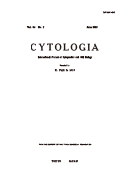
CYTOLOGIA
Scope & Guideline
Fostering Innovation in Biological Research
Introduction
Aims and Scopes
- Cytogenetics and Karyotype Analysis:
The journal frequently publishes studies on the karyotype and chromosomal characteristics of various plant species, providing insights into their genetic diversity and evolutionary relationships. - Plant Regeneration and Development:
Research on plant regeneration, including somatic embryogenesis and shoot regeneration from different explants, is a key area, highlighting methodologies for improving plant propagation and genetic studies. - Environmental and Stress Responses:
Papers often address how different environmental stresses and treatments (like irradiation) affect cytological processes, contributing to the understanding of plant resilience and adaptation. - Molecular and Cellular Mechanisms:
The journal includes studies on the molecular mechanisms underlying cytological phenomena, such as gene expression, DNA repair, and chromosomal behavior during cell division. - Biodiversity and Conservation:
A focus on the cytological and genetic characterization of endemic and rare species emphasizes the importance of biodiversity conservation efforts.
Trending and Emerging
- Genome Editing and Molecular Techniques:
There is a growing focus on genome editing technologies, including CRISPR and other molecular techniques, reflecting the modern landscape of genetic studies in plants. - Impact of Environmental Stressors:
Increased research on how various environmental stressors (such as radiation, heavy metals, and climate factors) affect plant cytology and genetics highlights the need for understanding plant resilience in changing environments. - Comparative Cytogenetics:
The journal is seeing a rise in comparative cytogenetic studies that analyze multiple species or populations, which enhances understanding of evolutionary biology and genetic diversity. - Application of Advanced Imaging Techniques:
Emerging themes include the use of advanced imaging techniques to study cellular processes, such as live-cell imaging and fluorescence microscopy, which allow for real-time analysis of cytological phenomena. - Interdisciplinary Approaches:
The integration of cytology with other fields, such as ecology, environmental science, and molecular biology, demonstrates a trend towards interdisciplinary research that addresses broader biological questions.
Declining or Waning
- Traditional Cytological Techniques:
There has been a noticeable decline in studies focusing solely on classical cytological techniques without integration of modern molecular approaches, as the field moves towards more comprehensive genomic analyses. - General Plant Morphology:
Research on general plant morphology, which used to be a staple, is now less prominent as the emphasis shifts towards molecular and genetic analyses that provide deeper insights into plant development. - Single-Species Studies:
The trend is moving away from studies that focus on single species without comparative analyses or broader ecological implications, as researchers increasingly recognize the importance of ecological context in cytological research.
Similar Journals

Plant Science Today
Innovating today for a greener future in plant sciences.Plant Science Today is a prominent journal dedicated to advancing the field of plant sciences through innovative research and comprehensive reviews. Published by HORIZON E-PUBLISHING GROUP in India, this open-access journal has been actively disseminating knowledge since its inception in 2018, with a convergence period extending to 2024. With an ISSN of 2348-1900 and a growing reputation, it is categorized in various quartiles for 2023, notably achieving Q3 in Biochemistry, Genetics and Molecular Biology (miscellaneous), while it holds Q4 rankings in critical fields including Ecology and Plant Science. As a valuable resource for students, researchers, and professionals, Plant Science Today aims to inspire discussion and innovation in the realm of ecological and plant science disciplines, where it currently ranks within the lower percentiles in prominent categories such as Environmental Science and Agricultural and Biological Sciences. The journal serves as a crucial platform for the exploration of experimental and theoretical advances, fostering a community eager to explore plant biology's complexities.

Applied Biological Research
Connecting Research to Real-World ChallengesApplied Biological Research is a dynamic journal issued by the CENTRE ADVANCEMENT APPLIED SCIENCES, specializing in the interdisciplinary fields of biochemistry, genetics, and molecular biology. With its ISSN 0972-0979 and E-ISSN 0974-4517, this journal serves as a critical platform for the dissemination of peer-reviewed research that addresses pressing challenges and innovations within biological sciences. Although currently it does not adopt an Open Access model, it is dedicated to fostering academic discourse through rigorous publication practices. The journal's impact is underscored by its Scopus rankings, which place it in the 4th and 2nd percentiles in respective categories, emphasizing its emerging influence in the scientific community. Covering research from 2020 to 2024, Applied Biological Research is positioned as an essential read for researchers, professionals, and students seeking to stay at the forefront of biological research and application. Based in the beautiful region of Jammu & Kashmir, India, this journal is committed to advancing applied sciences through innovative research and outreach.
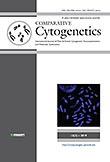
Comparative Cytogenetics
Unlocking the Secrets of CytogeneticsComparative Cytogenetics, an esteemed journal published by PENSOFT PUBLISHERS, is a pivotal resource in the fields of animal science, biotechnology, genetics, insect science, and plant science. Since its inception as an Open Access journal in 2009, it has significantly contributed to the democratization of scientific knowledge, allowing researchers and students across the globe to access cutting-edge developments in cytogenetics. With an impressive range of articles published from 2010 to 2024, this journal has achieved a commendable impact within the academic community, earning a Q3 ranking in Animal Science and Zoology, Biotechnology, and Insect Science, as well as a Q4 ranking in Genetics, indicating its growing influence. Its Scopus rankings reflect a solid standing, with notable percentiles showcasing its relevance across diverse biological sciences. Located in Sofia, Bulgaria, Comparative Cytogenetics serves not only to disseminate research but also to foster collaboration in understanding cytogenetic dynamics, making it an essential platform for professionals, researchers, and students alike.
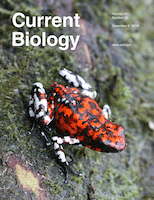
CURRENT BIOLOGY
Exploring the Depths of Life Sciences InnovationCURRENT BIOLOGY is a premier academic journal published by CELL PRESS, dedicated to a broad spectrum of fields within biological sciences. With an ISSN of 0960-9822 and E-ISSN 1879-0445, the journal has established itself as a vital resource for groundbreaking research and advancements since its inception in 1991. CURRENT BIOLOGY boasts high prominence in its categories, securing a Q1 quartile ranking in Agricultural and Biological Sciences, Biochemistry, Genetics and Molecular Biology, and Neuroscience, indicating its significant impact and relevance in these fields. Notably, it ranks #9 out of 221 journals in Agricultural and Biological Sciences, placing it in the 96th percentile, while also maintaining a strong presence in the Biochemistry category with a rank of #26. Researchers and professionals can rely on CURRENT BIOLOGY for comprehensive reviews, innovative methodologies, and crucial scientific developments that bridge theoretical knowledge with practical applications. The journal continues to play an essential role in enhancing the global dialogue in biological research, making it indispensable for students, academics, and industry experts aiming to stay at the forefront of the rapidly evolving landscape of life sciences.

PLANT SPECIES BIOLOGY
Exploring the Intricacies of Plant Species and EcosystemsPLANT SPECIES BIOLOGY, published by WILEY in the United Kingdom, is a prominent journal dedicated to advancing the understanding of plant species, their biology, ecology, and roles within ecosystems. With an impressive convergence of research dating back to 1986 and extending through 2024, this journal caters specifically to specialists in the fields of plant science and ecology. The journal's current impact factor further underscores its significance, ranking in the Q2 quartile across three relevant categories: Ecology, Ecology, Evolution, Behavior and Systematics, and Plant Science. As a member of the Scopus ranks, it holds respectable positions within its categories, evidencing its contribution to impactful scientific discussions and knowledge. Although it is not an open-access journal, PLANT SPECIES BIOLOGY provides essential insights, fostering interdisciplinary dialogue and discovery for researchers, professionals, and students dedicated to exploring the complexities of plant species and their ecosystems.
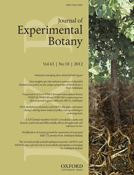
JOURNAL OF EXPERIMENTAL BOTANY
Exploring the intricate world of plant functions.JOURNAL OF EXPERIMENTAL BOTANY, published by Oxford University Press, stands as a premier journal for researchers and professionals in the fields of plant science and physiology. With an illustrious history dating back to 1950, this journal has established itself as a critical resource for advancing our understanding of plant biology and its applications. It is recognized in the top tier of academic publishing, reflected in its Q1 rankings in both Plant Science and Physiology for 2023, and boasts impressive Scopus rankings—placing it in the 96th and 91st percentiles of its respective categories. Though not an open-access journal, it ensures widespread access to groundbreaking research aimed at unraveling the complexities of plant functions and adaptations. As we look toward 2024, the JOURNAL OF EXPERIMENTAL BOTANY continues to play an essential role in fostering innovation, collaboration, and education within this vital area of science.
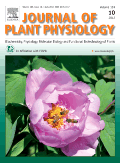
JOURNAL OF PLANT PHYSIOLOGY
Exploring the Dynamics of Plant LifeJOURNAL OF PLANT PHYSIOLOGY, published by ELSEVIER GMBH, stands as a leading international journal dedicated to the field of plant physiology, agronomy, and crop science. With an impressive impact factor and recognition within the Q1 and Q2 quartiles across various categories, this journal consistently ranks among the top in its field—positioned at #65/516 in Plant Science and #52/406 in Agronomy and Crop Science as of 2023. Located in Munich, Germany, it serves as a vital platform for researchers, practitioners, and students to share groundbreaking insights and advancements. Although it does not currently offer open access, the journal provides an essential repository of knowledge, publishing significant original research, reviews, and discussions on plant function, regulation, and development, thereby shaping the future of agricultural practices and contributing to our understanding of biophysical processes. Researchers looking to publish in a reputable venue or to access cutting-edge studies will find JOURNAL OF PLANT PHYSIOLOGY an invaluable resource.

Propagation of Ornamental Plants
Cultivating Knowledge in Ornamental HorticulturePropagation of Ornamental Plants is a distinguished journal published by SEJANI PUBL that focuses on the field of ornamental horticulture, an area critical to both commercial and aesthetic applications in the environment. With an ISSN of 1311-9109, this journal serves as a platform for scholarly articles and research spanning from 2005 to 2021, and resuming in 2023. While its current Category Quartiles place it within the Q4 rankings for Forestry and Plant Science, this journal remains committed to providing valuable insights and research findings related to plant propagation techniques, environmental sustainability, and ornamental plant breeding. Despite being an underrepresented publication within its field, its efforts contribute to the body of knowledge necessary for advancing both academic research and practical applications. For researchers, professionals, and students alike, Propagation of Ornamental Plants stands as an essential resource for advancing the field and fostering innovation in ornamental horticulture.

PHYSIOLOGY AND MOLECULAR BIOLOGY OF PLANTS
Fostering a Deeper Understanding of Plant MechanismsPHYSIOLOGY AND MOLECULAR BIOLOGY OF PLANTS, published by SPRINGER, is a vital journal focused on the advancing field of plant science. Featuring research that spans physiology, molecular biology, and their applications in agriculture, this journal is pivotal for academics, professionals, and students keen on understanding plant processes and enhancing crop production. With an ISSN of 0971-5894 and an E-ISSN of 0974-0430, this journal is recognized for its scholarly significance, ranking in the Q3 category in Molecular Biology, Q2 in Physiology, and Q1 in Plant Science as of 2023. The journal maintains a strong position in the Scopus rankings, with notable percentile rankings including 87th in Plant Science. Established in 2000, this publication aims to foster the dissemination of cutting-edge research by providing a platform for open discussion and knowledge sharing about plant physiology and molecular mechanisms. While it does not currently offer open access options, its comprehensive studies and reviews serve as an essential resource for enhancing our understanding of plant biology.

NUCLEUS-INDIA
Catalyzing progress in the field of Molecular Medicine.NUCLEUS-INDIA is a prominent academic journal that delves into the intricate realms of Cell Biology, Genetics, Molecular Biology, and Molecular Medicine. Published by SPRINGER INDIA, this journal has been a reliable source of innovative research since its inception in 2011. With an ISSN of 0029-568X and an E-ISSN of 0976-7975, NUCLEUS-INDIA stands out in the scientific community, functioning as a critical platform for the dissemination of groundbreaking findings and advancements within its fields of study. Despite being categorized in the lower quartiles as of 2023, it remains an important contributor to the literature, providing insights that influence both academic and practical perspectives in genetics and molecular sciences. Researchers, professionals, and students alike can benefit from its diverse array of articles addressing contemporary challenges and innovations. The journal is located at 7th Floor, Vijaya Building, 17, Barakhamba Road, New Delhi 110 001, India, and aims to enhance the scholarly discourse in biology by publishing works that push the boundaries of current understanding.